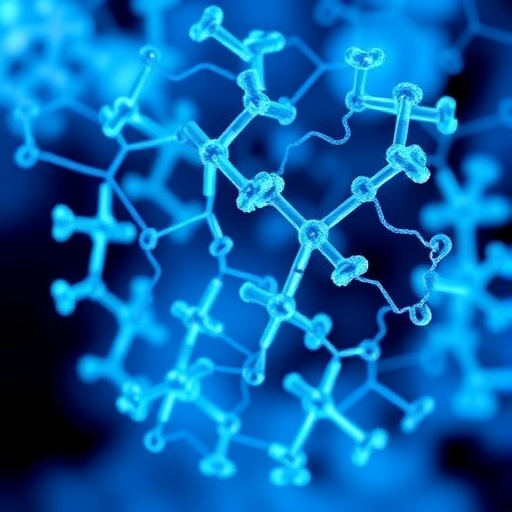In a groundbreaking study published in the Journal of Translational Medicine, researchers have unveiled a significant advancement in the search for new therapeutic agents targeting AGC2, a pivotal protein involved in various cellular processes. This groundbreaking research, entitled “Discovery of therapeutic AGC2 modulators by combining docking, binding, and vesicle-based transport assays,” highlights a multi-faceted approach integrating computational and experimental methodologies to identify promising modulators.
AGC2, a member of the AGC kinase family, plays a crucial role in signal transduction pathways, particularly those related to cellular growth and metabolism. Its dysregulation has been associated with several diseases, including cancer and metabolic disorders. Therefore, developing novel modulators that can precisely interact with AGC2 is critical for therapeutic applications. The study by Cafferati Beltrame et al. represents a significant step forward in this quest by employing innovative techniques to discover potential AGC2 modulators.
The research team utilized computational docking methods, a powerful tool in drug discovery, to predict how various compounds would interact with AGC2. By simulating the binding between small molecules and AGC2, the researchers were able to identify candidates that exhibited a high likelihood of inhibition or activation of the target protein. This virtual screening process significantly streamlined the identification of lead compounds, reducing the time and resources typically required in the early stages of drug development.
Building on the computational findings, the team performed binding assays to validate the interactions predicted by docking studies. These assays are essential as they confirm whether the identified compounds can effectively bind to AGC2 in a laboratory setting. Through a series of biophysical techniques, the researchers quantified the binding affinity of each compound, providing critical data related to the strength and specificity of these interactions.
Moreover, the study incorporated vesicle-based transport assays, an innovative approach to assess the functional impact of the identified compounds on AGC2’s activity. These assays allowed researchers to observe the modulation of AGC2 in a cellular context, providing a more comprehensive understanding of how the compounds affect the protein’s function. Such studies are vital as they bridge the gap between in vitro findings and real-world therapeutic implications.
One of the standout discoveries of this research was a novel class of AGC2 modulators that demonstrated promising results. These compounds showed the potential to either inhibit or enhance AGC2 activity, depending on their chemical structure and binding orientation. This dual modulation capability opens the door to a new era of drug design, where precisely tailored therapies could be developed to restore normal AGC2 function in pathological conditions.
The implications of this research are profound, suggesting that the newly discovered AGC2 modulators could serve as foundational tools in the development of targeted therapies. As AGC2 is intricately linked to several cellular signaling pathways, the ability to modulate its function could have far-reaching consequences in treating various diseases, particularly those that lead to aberrant cellular growth, such as cancer.
Moreover, the robustness of the study is underscored by the rigorous validation of findings through multiple experimental methods. The researchers employed various techniques to ensure that the identified compounds consistently demonstrated the desired effects on AGC2 across different experimental conditions. This level of scrutiny is essential in drug discovery, as it helps to weed out false positives and ensures that only the most promising candidates progress toward further testing.
The collaborative efforts of the research team exemplify the power of interdisciplinary approaches in modern biomedical research. By combining expertise in computational biology, biochemistry, and pharmacology, the team was able to tackle the complex problem of AGC2 modulation from multiple angles. This synergy not only accelerates the discovery process but also enhances the likelihood of translating laboratory findings into clinical applications.
Furthermore, the study offers valuable insight into the molecular mechanisms governing AGC2 interactions. Understanding these mechanisms is crucial for the rational design of future therapeutic agents. By elucidating how specific compounds interact with AGC2 at the molecular level, researchers can optimize the properties of these modulators for improved efficacy and safety profiles.
As the field of drug discovery continues to evolve, the methodologies employed in this study—integrative docking, binding, and functional assays—highlight the importance of a comprehensive approach to identifying new therapeutics. This research not only advances our understanding of AGC2 but also sets a precedent for future studies targeting other proteins implicated in disease.
In conclusion, the discovery of therapeutic AGC2 modulators represents a significant milestone in the pursuit of precision medicine. By strategically combining computational and experimental techniques, Cafferati Beltrame and colleagues have laid the groundwork for the development of targeted therapies aimed at restoring normal cellular function in the face of disease. This work not only holds promise for future drug development but also exemplifies the potential of integrated approaches in addressing complex biomedical challenges.
As researchers continue to explore the therapeutic landscape of AGC2 modulation, the findings from this study pave the way for future investigations, ultimately contributing to our understanding of cellular signaling and its implications for health and disease.
Subject of Research: Therapeutic modulation of AGC2
Article Title: Discovery of therapeutic AGC2 modulators by combining docking, binding, and vesicle-based transport assays
Article References:
Cafferati Beltrame, L., Todisco, S., Francavilla, A.L. et al. Discovery of therapeutic AGC2 modulators by combining docking, binding, and vesicle-based transport assays.
J Transl Med 23, 1033 (2025). https://doi.org/10.1186/s12967-025-06961-x
Image Credits: AI Generated
DOI: 10.1186/s12967-025-06961-x
Keywords: AGC2, modulators, drug discovery, computational docking, binding assays, spatial exploration, pharmacology, precision medicine, cellular signaling, therapeutic agents




